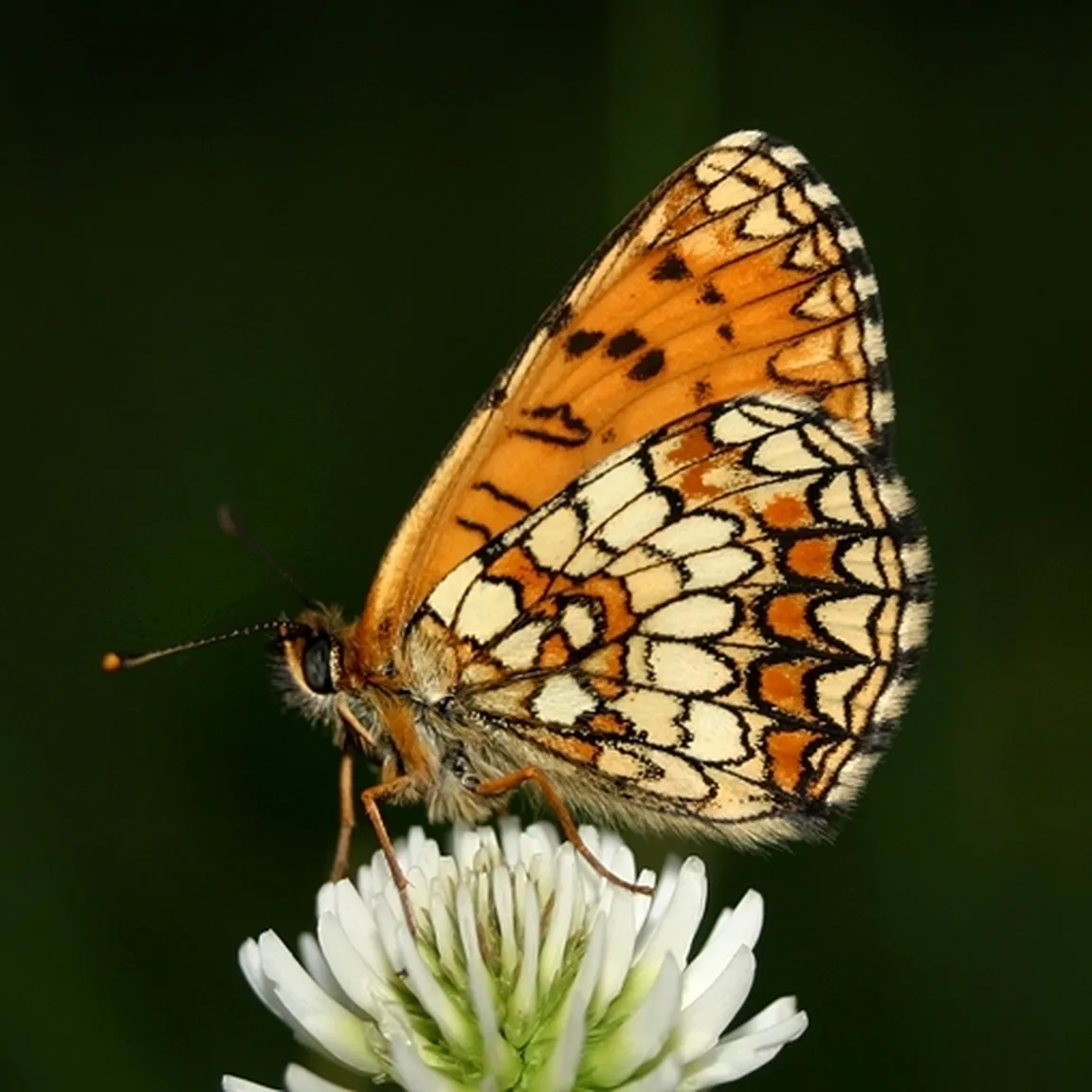Wingspan: 29–35 mm
Flight period of the butterflies: in one generation from May to July
Larval host plants: species from the genera Plantago (Plantago), Veronica (Veronica), probably also the genus Rhinanthus (Rhinanthus), Melampyrum (Melampyrum) and Digitalis (Digitalis)
The Jetičnikov fritillary (Melitaea aurelia) belongs to a group of four closely related and visually very similar fritillaries, which have in the inner corner of the underside of the hind wings a band of black-edged dark orange and pale yellow spots without a black dot. These species, in addition to the Jetičnikov, are the marsh fritillary, the dark fritillary, and the common fritillary. Identifying these species in the field is often unreliable and requires plenty of experience. Of the dark ones, the Jetičnikov fritillary can be reliably distinguished only by the structure of the male's genitalia … The Jetičnikov fritillary is characterized by light and dark hairs on the underside of the palps (paired sensory organs beneath the butterfly's eyes).
The Jetičnikov fritillary lives in extensive meadows that are mowed at most once a year. It occurs mainly in the lowlands, although it can be observed up to the forest boundary. It is most common in the Primorska region, for example on the Karst and in the Vipava Valley. Elsewhere in Slovenia it occurs very sparsely and only in small isolated populations.
It is precisely the fragmentation of the habitat of the Jetičnikov fritillary that is the main reason for its inclusion on the Slovenian red list in the category vulnerable species. Small, unconnected populations are threatened with extinction due to abandoning mowing and the consequent overgrowth on the one hand and the intensification of meadow management using artificial fertilizers and too frequent mowing on the other.


